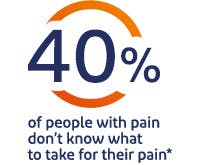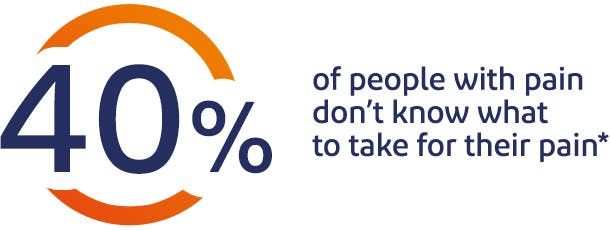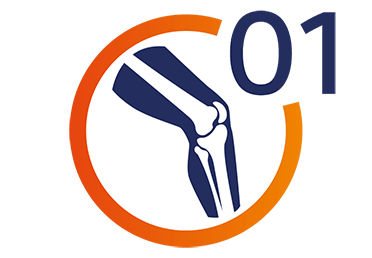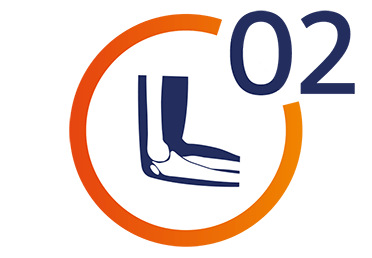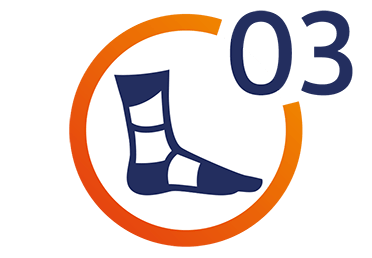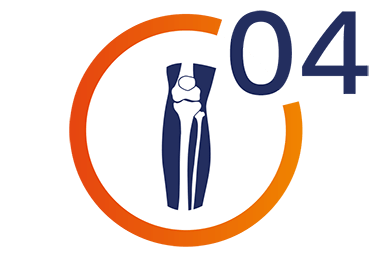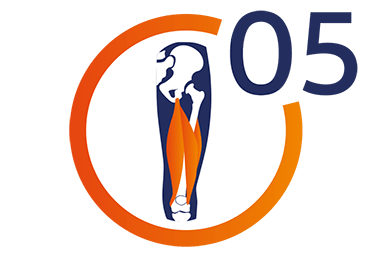Injuries
Depending on the injury, symptoms can vary from mild to severe and be short lived or long lasting.
Acute injuries occur suddenly and may be accompanied by sharp and severe pain, swelling and lack of mobility in the affected area.
01
Sprains (when a ligament is stretched, twisted or torn) and strains (when muscle fibres stretch or tear) are common. Symptoms include pain, swelling, bruising, muscle spasms, and inability to freely move affected joints.
02
How injuries can affect you?
Sprains and strains may initially require professional medical treatment and can stop you from doing everyday activities. Serious injuries like fractures, torn ligaments and dislocations may cause a lot of pain, require professional medical treatment and force you to rest while you recover.
Did you know?
Never try to work through the pain of a musculoskeletal injury. When you feel pain, you should stop walking, playing or exercising as carrying on could only cause more damage.*
13% of people say that their body pain has been caused by injury.**
*Fast Facts About Sports Injuries. 2016. Fast Facts About Sports Injuries. [ONLINE] Available at: http://www.niams.nih.gov/Health_Info/Sports_Injuries/sports_injuries_ff.asp. [Accessed 18 April 2016].
*2016. Global Pain Index Full Report. Haleon Global Pain Index
Causes and types
Injuries can happen when you’re at work or at home, playing sports or driving a car. Work injuries can be caused by slips, falls or lifting, while common sports injuries include knee injuries, Achilles tendon injuries, sprains and strains, and shoulder injuries.
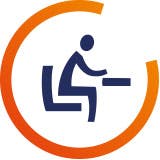
Injuries at work
Some of the most common causes of injury at work are trips, slips and falls, and manual handling and lifting accidents. The most common types of injury at work are sprains and strains, back, head and neck injuries and repetitive strain injuries.

Sports injuries
Sports injuries can affect almost any part of your body, including the muscles, bones, joints and connective tissues (tendons and ligaments). The most common type of sports injuries are sprains and strains. Knee injuries can be caused during sports or exercise, the result of overuse, damaged cartilage or a torn ligament. Achilles tendon injuries may occur when the tendon connecting the calf muscle to the heel is damaged. Sports injuries can result from accidents, poor training practices, incorrect clothing or shoes, lack of fitness or not warming up and stretching enough before playing.
Expert treatment
The treatment of an injury will depend on its type and how serious it is. Minor injuries can often be treated at home. To reduce inflammation and pain, you can use over-the-counter non-steroidal anti-inflammatory drugs (NSAIDs) from your pharmacist. It is recommended you visit your doctor if the injury causes severe pain, heavy bleeding, numbness, when you can’t tolerate any weight on the area or if the pain is accompanied by increased swelling or joint instability. Your doctor may recommend rehabilitation exercises to return the injured body part to a normal level of function.

5 Common injuries
Explore our range
Find out how our products can help
Discover the Voltaren product range to find the right product to treat your pain.
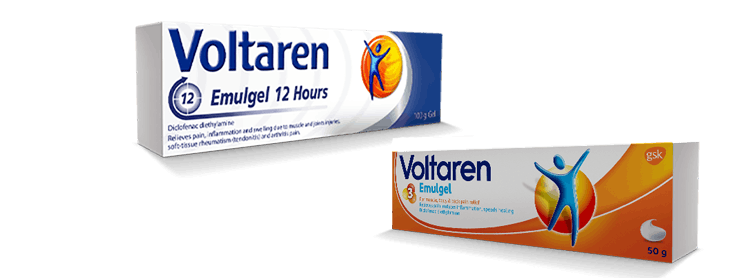
Learn more
Exercise and your body
Learn more about the benefits of exercise and how keeping fit can help you to stay healthy and relieve pain.
read moreLearn about your body and how it changes as you age
Find out how your body works, changes you may experience as you get older, and how to deal with age-related body pain.
read moreAll you need to know about pain relief
Here we explain how different types of pain relief products work, to help you choose the best one for your pain.
*GSK Global Pain Index Report 2014
Read More